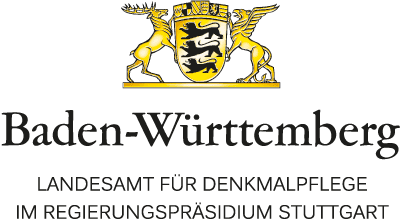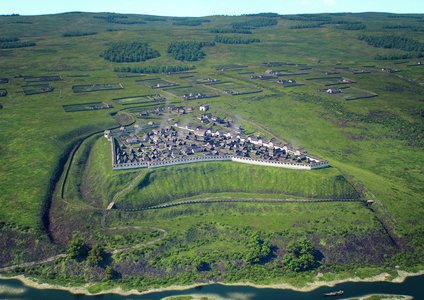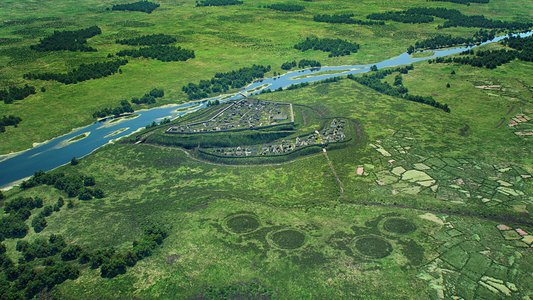The Heuneburg - A Centre of Power for the Early Celts
Driving through the upper Danube valley, the attentive observer will notice a white wall rising above the valley to the north between Sigmaringen and Riedlingen. 2,600 years ago, an important early Celtic centre of power stood on this spur of land we call the Heuneburg. Today part of the reconstructed fortifications and buildings can be visited in the archaeological open-air museum Heuneburg, which is set to be developed into a Celtic experience world in the coming years.
The plateau of the Heuneburg, which covers about 3 hectares, was fortified around 620BC and, in the succeeding decades, developed into one of the most important centres of power and commerce north of the Alps. The decisive factor in choosing place, was its geographically favourable location above the Danube; one of the most important east-west arteries of communication of the time. It is very likely that the Danube was, in earlier times, navigable by boats and rafts all year round from this point in the landscape. The archaeological finds from the Heuneburg also attest to contacts to the north and to the Mediterranean in the south. Against this background, it makes sense that one of the most important early Celtic centres north of the Alps developed at this location around 600BC. The densely and regularly built upper town or citadel was well fortified at this time. The architecture of this fortification was inspired by Mediterranean practices, and was constructed in the form of a wall made of air-dried mud bricks and several bastion-like projecting towers. It would have been a demonstration of power of the first rank, and have been visible from afar above the Danube valley. This upper town was adjoined to the west by a lower town, which covered an area of approx. 1.5 ha. It was also protected by a moat, rampart, palisade and a monumental gate. In the 6th century BC this central area of settlement was flanked to the west by the outer settlement. The outer settlement covered more than 100 ha, was fortified by wall-ditch systems and subdivided into districts. It is estimated that at this time there were between 4,000 and 5,000 inhabitants living in the Heuneburg’s various areas.
Around 530 BC a fire led to major changes at the Heuneburg. The mud-brick wall was partially destroyed, and replaced by a wall made of wood, stones and earth using traditional, local techniques. The settlement structures in both the upper and lower towns changed fundamentally. In the upper town, farmstead-like estates were built, some with large imposing buildings. At the time the lower town became very densely populated. However, these changes were probably not solely due to the fire, as the Heuneburg’s huge outer settlement was also abandoned at this time, and four large burial mounds were built on its ruins opposite the gate to the lower town. The excavation results indicate that parts of the elite moved their residence from the area of the outer settlement to the upper town, and displaced the original inhabitants there, including many craftsmen, who subsequently moved to the lower town. The Heuneburg continued to exist in this form until 450BC and was then abandoned after another fire. However, it probably lost its position as a dominant centre north of the Alps around 530BC, whereupon it was eclipsed by other settlements.
References: Krausse et al. 2016a; Krausse et al. 2017a.



